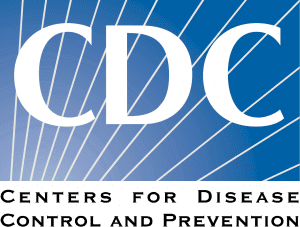They report that among 121,390 cases hospitalized with laboratory-confirmed influenza over nine seasons, 5.5% died. Among all patients with an influenza-associated hospitalization who died, 48% of deaths occurred after hospital discharge; the median number of days from discharge to death was nine (interquartile range, 3–19). Post-discharge deaths more often occurred in older patients and among those with underlying medical conditions. Only 37% of patients who died had “influenza” as a COD on their death certificate. Influenza was more frequently listed as a COD among persons who died in the hospital compared with cardiovascular disease among those who died after discharge.
COVID-19 Antiviral Medication Use Among Pregnant and Recently Pregnant U.S. Outpatients
Here a total of 412,755 publicly and privately insured patients with COVID-19 were identified, including 33,855 currently pregnant, 2,460 recently pregnant, and 376,440 nonpregnant female patients; 6.8% had a record of antiviral medication use, including 1.3% of pregnant, 5.4% of recently pregnant, and 7.3% of nonpregnant women. Most commonly ritonavir-boosted nirmatrelvir was administered. The prevalence of antiviral medication use was 67% lower among pregnant patients compared with nonpregnant patients (PR, 0.33 [95% confidence interval, .30–.36]), even among patients with ≥1 high-risk medical condition (0.29 [.25–.33]). Antiviral medication use was slightly lower among recently pregnant women with ≥1 high-risk medical condition than among nonpregnant women with similar conditions (PR, 0.57; [95% confidence interval, .44–.72]). They conclude with “Despite U.S. clinical guidelines, we observed low rates of outpatient treatment for COVID-19 among pregnant patients, indicating possible missed opportunities to treat COVID-19 illness during pregnancy and lactation.”
TGFβ Links EBV to Multisystem Inflammatory Syndrome in Children
This study suggests that kids who develop MIS-C (multisystem inflammatory syndrome in children), a severe complication following COVID-19 infections, may do so because COVID reactivates latent Epstein-Barr virus (EBV). They find 80.7% of kids with MIS-C had evidence of EBV in blood samples, compared to 56.0% of controls. Then they show that acute MIS-C is characterized by impaired reactivation of virus-reactive memory T cells, which depends on increased serum levels of the cytokine TGFβ. This functional impairment in T cell reactivity is accompanied by the presence of TGFβ-response signatures in T cells, B cells and monocytes along with reduced antigen-presentation capabilities of monocytes, and can be reversed by blocking TGFβ. Furthermore, T cell receptor repertoires of patients with MIS-C exhibit expansion of T cells expressing TCRVβ21.3, resembling Epstein–Barr virus (EBV)-reactive T cell clones capable of eliminating EBV-infected B cells. Additionally, serum TGFβ in patients with MIS-C can trigger EBV reactivation, which is reversible with TGFβ blockade. Clinically, the TGFβ-induced defect in T cell reactivity correlates with a higher EBV seroprevalence in patients with MIS-C compared with age-matched controls, along with the occurrence of EBV reactivation. They conclude by saying that these findings suggest a connection between SARS-CoV-2 infection and COVID-19 sequelae in children, in which impaired T cell cytotoxicity triggered by TGFβ overproduction leads to EBV reactivation and subsequent hyperinflammation.
Situation Dashboards

World Health Organization (WHO)

Johns Hopkins University (JHU)

COVID-19 in US and Canada







